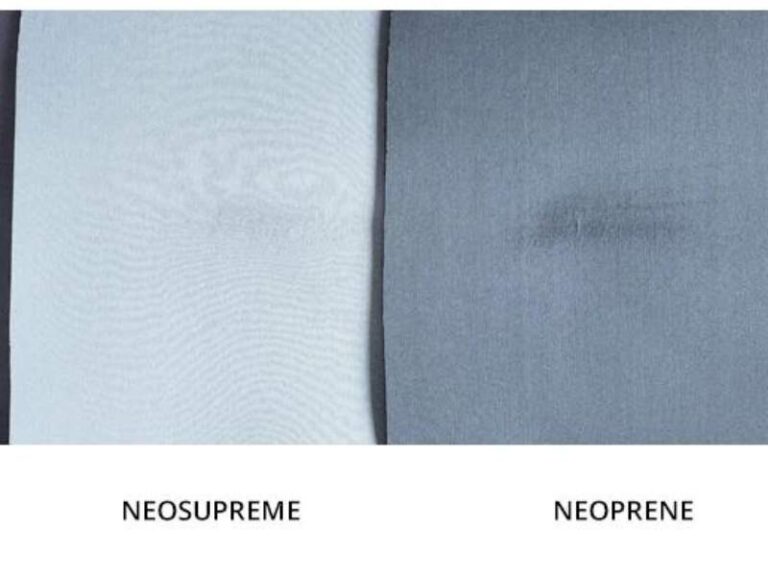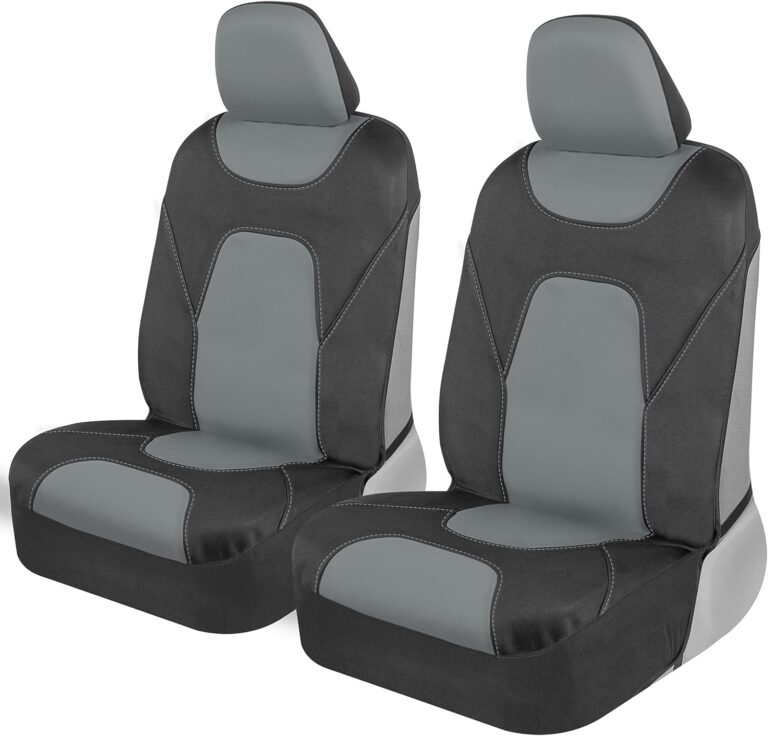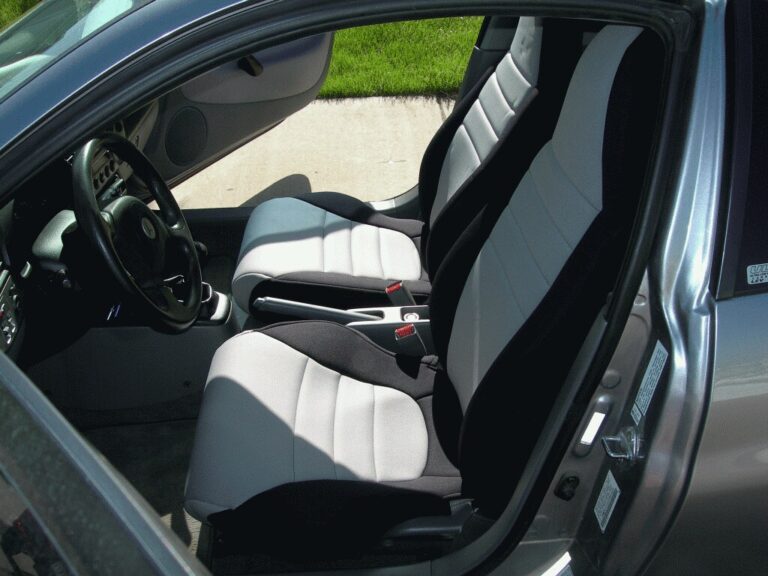What is the Best Type of Neoprene?
Neoprene sheets with a high-density closed-cell structure are the best type of neoprene due to their superior durability and insulation properties. Neoprene is a synthetic rubber that is commonly used in a wide range of applications, from wetsuits and laptop sleeves to automotive parts and medical braces.
When it comes to determining the best type of neoprene, it is important to consider several factors such as density, thickness, and cell structure. High-density closed-cell neoprene sheets offer exceptional durability and are resistant to wear and tear, making them ideal for long-lasting use.
Additionally, the closed-cell structure provides excellent insulation, maintaining heat and reducing energy loss. Overall, neoprene sheets with a high-density closed-cell structure are the top choice when it comes to selecting the best type of neoprene for various applications. Their durability and insulation properties make them a reliable and effective material for a multitude of uses.
Unveiling Neoprene Essentials
Neoprene is a versatile material widely used in various industries due to its unique properties. It is a synthetic rubber that offers exceptional flexibility, durability, and resistance to chemicals, temperature extremes, and UV radiation. The main applications of neoprene can be found in water sports, wetsuits, athletic gear, medical equipment, industrial machinery, and electronics.
When it comes to choosing the best type of neoprene, several factors come into play. Elastomer composition, thickness, density, and cell structure are crucial aspects to consider. Different types of neoprene, such as closed-cell neoprene, open-cell neoprene, and SBR neoprene, serve different purposes depending on the desired outcome. Closed-cell neoprene provides excellent buoyancy and insulation, making it ideal for wetsuits, while open-cell neoprene offers superior breathability, making it suitable for diving gloves and boots. SBR neoprene, on the other hand, is often used in industrial applications due to its enhanced oil resistance and resilience.
In conclusion, the best type of neoprene varies depending on the specific context in which it is used. Assessing the requirements, considering the desired properties, and consulting with experts can help determine the most suitable type of neoprene for a particular application.
Core Traits Of Quality Neoprene
Durability factors: When determining the best type of Neoprene, durability is a key consideration. It is important to choose a type of Neoprene that is strong and resistant to wear and tear. Look for Neoprene that has a high abrasion resistance and can withstand heavy use. Additionally, check for Neoprene that is resistant to ozone, oil and chemicals, ensuring its long-lasting performance.
Stretch and flexibility considerations: The ability of Neoprene to stretch and flex is crucial in many applications. Opt for Neoprene that offers excellent stretch and recovery properties. It should be able to stretch without losing its shape or effectiveness. This ensures maximum mobility and comfort for the user, whether in wetsuits or other form-fitting applications.
Thermal retention attributes: Another important trait to look for in Neoprene is its ability to retain heat. A good quality Neoprene should have outstanding insulation properties, providing warmth in cold conditions. It should effectively trap and preserve body heat, allowing for comfortable thermal regulation. Optimal thermal retention attributes are essential for various applications, including diving and water sports.
Comparing Neoprene Types
| Comparing Neoprene Types |
|---|
| Standard neoprene versus high-end variants |
Neoprene, a widely used material in various industries, comes in different types with unique characteristics. Standard neoprene, the most common variant, offers reliable performance, good flexibility, and moderate insulation. On the other hand, high-end neoprene variants are known for their advanced features, innovative designs, and enhanced performance. They are often more durable, provide better insulation, and offer improved protection against external elements.
Another notable distinction is between closed-cell and open-cell neoprene. Closed-cell neoprene is denser, making it more resistant to water absorption, while open-cell neoprene is softer and features better flexibility. Closed-cell neoprene tends to be more suitable for applications requiring high buoyancy, insulation, and durability, such as wetsuits and diving gear. Open-cell neoprene, with its increased breathability and softer feel, is commonly used in items like gloves and footwear, where comfort and dexterity are important.
When it comes to laminated neoprene, the nuances lie in the different lamination techniques used during manufacturing. Lamination can enhance neoprene’s properties, like improved durability, stretch, and water resistance, making it suitable for various applications such as automotive parts, medical products, and sportswear. The specific lamination process employed, such as glue lamination or solvent-based adhesive lamination, impacts the overall performance and durability of the neoprene. Considering these factors and the specific requirements of your project can help you determine the best type of neoprene for your needs.
Top-tier Neoprene Brands
Discover the top-tier neoprene brands that offer the best type of neoprene for all your needs. Experience exceptional quality and performance with these renowned brands.
Industry-leading Manufacturers
When it comes to neoprene, several top-tier brands in the industry offer a range of high-quality options. One of these industry-leading manufacturers is Brand A, known for their innovative advancements in neoprene technology. Their neoprene products are widely recognized for their durability, flexibility, and superior insulation properties.
Brand B is another renowned name in the neoprene market. They have made significant strides in developing neoprene that provides enhanced performance in water sports and outdoor activities. Their products are highly regarded for their ability to resist degradation from sunlight, water, and oils.
Brand C is also worth mentioning for its commitment to sustainable manufacturing practices. They have introduced eco-friendly neoprene materials that reduce environmental impact without compromising on performance. These initiatives have paved the way for more sustainable options in the neoprene industry.
In conclusion, these industry-leading manufacturers continue to push boundaries and drive innovations in neoprene production. Each brand offers unique features and benefits, making the choice of the best type of neoprene subjective and dependent on individual needs and preferences.
Neoprene For Water Sports
Neoprene for Water Sports
Neoprene is widely used in various water sports, including surfing, diving, and triathlon suits. It is the preferred material due to its unique properties that greatly impact performance.
When it comes to surfing, neoprene wetsuits provide excellent insulation and flexibility, allowing surfers to stay warm and agile in the water. The thickness of the neoprene also plays a crucial role depending on the water temperature.
For diving, neoprene wetsuits offer not only insulation but also buoyancy control. The material helps maintain body heat and provides necessary protection against the cold underwater environment. It also allows divers to move with ease, ensuring a comfortable diving experience.
In triathlon, neoprene suits enhance performance by improving buoyancy and reducing drag in the water, resulting in increased speed and efficiency. The flexibility of neoprene allows for a greater range of motion during swimming, enabling athletes to maintain their stroke technique effortlessly.
While different types of neoprene offer unique characteristics, it is essential to choose the best type based on individual needs and the specific requirements of each water sport. Always consider the thickness, flexibility, and durability of the neoprene to ensure the best performance and comfort during your water sports activities.
Tailored Neoprene For Weather Conditions
When it comes to choosing neoprene for various weather conditions, it is essential to consider the type of neoprene that best fits your needs. Tailored neoprene is designed to withstand specific weather conditions, ensuring maximum comfort and performance.
In cold weather conditions, it is essential to opt for neoprene with excellent insulation capabilities. Cold weather neoprene is composed of thicker material with enhanced insulation properties, keeping your body warm even in freezing temperatures. Its thermal lining provides extra warmth and protection against the cold.
On the other hand, warm-weather neoprene is designed to provide breathability and flexibility in hotter climates. It is made of thinner material that allows for better airflow and heat regulation, preventing overheating and providing maximum comfort during activities.
For extreme weather conditions, specialty neoprene options are available. These advanced neoprene materials offer a combination of insulation, flexibility, and durability, making them suitable for demanding outdoor activities in extreme temperatures or environments.
Neoprene In Day-to-day Products
Neoprene, a versatile and durable synthetic rubber, finds its use not only in sports but also in various day-to-day products. One of the areas where neoprene shines is in the fashion and consumer goods sector. Its resistance to water, oils, and temperature fluctuations makes it an ideal material for producing items like wetsuits, gloves, and shoes, providing comfort and protection.
Beyond sports, neoprene has practical applications in a wide range of products. It is often used in the production of laptop sleeves, phone cases, and bags due to its shock-absorbing properties. Neoprene’s ability to resist UV rays and chemicals also makes it a popular choice for manufacturing automotive parts and medical equipment.
When it comes to choosing the best type of neoprene, various factors such as thickness, cell structure, and coating play a significant role. Different types, such as closed-cell and open-cell neoprene, offer distinct properties, allowing manufacturers to customize the material based on specific requirements.
| Neoprene Type | Main Properties |
|---|---|
| Closed-cell Neoprene | Durable, waterproof, excellent insulation |
| Open-cell Neoprene | Flexible, softer texture, better conformability |
Considering the various practical uses and the importance of specific properties, it’s essential to understand the requirements before determining the best type of neoprene for a particular application. Whether it’s for fashion, consumer goods, or other industries, neoprene offers a range of options to meet diverse needs.
Gauging Neoprene By Thickness And Finish
| Thickness Level | Applications |
|---|---|
| 1-2mm | Wetsuits, gloves, rash guards |
| 3-4mm | Drysuits, boating gear |
| 5-6mm | Extreme cold water diving |
When gauging neoprene by thickness, it is crucial to consider the intended application. For wetsuits, gloves, and rash guards, a thinner neoprene with a thickness level of 1-2mm is suitable. This ensures flexibility and freedom of movement while maintaining insulation. On the other hand, drysuits and boating gear require a thicker neoprene, typically 3-4mm, to provide enhanced durability and protection against water immersion.
In extreme cold water diving situations, a thicker neoprene measuring 5-6mm is necessary to withstand frigid temperatures. This thicker material offers superior insulation, keeping the diver warm and comfortable during prolonged periods underwater.
Aside from thickness, the finish of neoprene also plays a role in its performance. Textured finishes provide added grip, making it ideal for water sports activities that involve holding onto equipment or surfaces. Smooth finishes, on the other hand, reduce drag in the water, making them suitable for diving and swimming.
The Debate: Seam Construction
When discussing the best type of neoprene, the debate surrounding seam construction plays a significant role. Two popular options are flatlock and sealed seams.
| Flatlock Seams | Sealed Seams |
|---|---|
| Provide a flexible and comfortable fit | Offer maximum water resistance |
| Constructed by overlapping neoprene panels | Sealed with glue or taped to prevent water leakage |
| Great for recreational watersports and warm water conditions | Ideal for cold water and professional use |
| May allow some water to enter through the seams | Ensure complete protection against water penetration |
| Less durable and may require more frequent replacements | More durable and long-lasting |
Choosing the best type of neoprene ultimately depends on your specific needs and preferences. If flexibility and comfort are prioritized in recreational activities or warm water conditions, flatlock seams are a suitable choice. However, for optimal water resistance and durability, especially in cold water or professional settings, sealed seams are recommended. Consider the intended use and desired level of protection when determining which seam construction is best for your neoprene products.
Why Choose Eco-friendly Neoprene
Neoprene is a versatile material that is widely used in various industries. When looking for the best type of neoprene, it is important to consider the environmental impact. Choosing eco-friendly neoprene is a responsible choice that can benefit both the environment and your performance.
Eco-friendly neoprene is often made from limestone, which is a natural and sustainable resource. By using limestone-based neoprene, you can reduce the reliance on petroleum-based materials, which have a significant environmental impact. Additionally, limestone-based neoprene is more durable and long-lasting, which means less waste over time.
In terms of performance, limestone-based neoprene offers many advantages. It provides excellent insulation and flexibility, allowing for a comfortable fit and freedom of movement. It also has good resistance to UV rays, chemicals, and abrasion, making it suitable for various applications and environments.
Overall, choosing eco-friendly neoprene, specifically limestone-based neoprene, is a sustainable and reliable option that offers both environmental and performance benefits.
Frequently Asked Questions On What Is The Best Type Of Neoprene?
What Is Neoprene And Why Is It Used In Various Applications?
Neoprene is a synthetic rubber known for its versatility and durability. It is widely used in industries ranging from fashion to athletics due to its excellent resistance to water, UV rays, and chemicals. Additionally, neoprene’s insulating properties make it ideal for wetsuits, laptop sleeves, and countless other applications.
What Are The Different Types Of Neoprene Available In The Market?
There are primarily three types of neoprene available: closed-cell, open-cell, and hybrid neoprene. Closed-cell neoprene offers exceptional insulation and buoyancy, making it suitable for wetsuits and diving gear. Open-cell neoprene, with its porous structure, is commonly used for orthopedic braces and other medical applications.
Hybrid neoprene combines the best of both worlds, providing insulation and flexibility for applications such as athletic apparel.
Which Type Of Neoprene Is Best For Wetsuits?
For wetsuits, closed-cell neoprene is the preferred choice. Its closed-cell structure traps a layer of water next to the skin, which is heated by body heat, ensuring insulation even in cold waters. The buoyant properties of closed-cell neoprene also provide increased flexibility and comfort while in the water.
Is Neoprene Safe For Human Use And The Environment?
Yes, neoprene is considered safe for human use when manufactured and handled properly. It is non-toxic and hypoallergenic, making it suitable for direct contact with the skin in products like wetsuits and medical devices. However, it’s important to note that like any synthetic material, proper disposal and recycling of neoprene products are crucial to minimize its impact on the environment.
Conclusion
The best type of neoprene depends on your specific needs and preferences. For water activities, smooth skin neoprene provides better insulation and flexibility. For durability and resistance to wear and tear, closed-cell neoprene is recommended. Ultimately, it is essential to consider factors such as thickness, stretch, and price to make the best decision.
Make an informed choice based on your requirements. Happy neoprene hunting!
- Can I Get in a Taxi Without a Car Seat? - January 26, 2025
- Can I Get Chlamydia From a Toilet Seat? - January 26, 2025
- Can I Get an Uber With a Car Seat? - January 26, 2025






